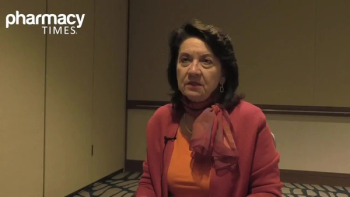
US Health Spending Remains Highest Among Developed Countries, Prices to Blame
Study shows the United States spends more on health care on a per capita basis than other developed countries, mostly due to higher prices.
Despite health policy reforms and efforts to reduce health care costs, there are still substantial differences in spending between the United States and other developed countries, mostly due to higher prices, according to report published in Health Affairs.
The study is based on an analysis of health care use and spending in industrialized countries that are members of the Organization for Economic Cooperation and Development (OECD) and provides an update to a previous report published in 2003.
According to the study authors, the analysis showed that the higher overall health care spending in the United States was due to higher prices, further confirming the conclusions from the 2003 report. This includes higher drug prices, higher salaries for physicians and nurses, higher hospital administration costs, and higher costs for medical services. Despite higher spending, the analysis showed that the United States still provides significantly fewer resources compared with the OECD median country.
For per capita health care spending in 2016, the United States spent a total of $9892, which is approximately 25% higher than Switzerland, the second highest spender at $7919. It was also 145% higher than the OECD median of $4033 and more than double the $4559 the United States spent per capita in 2000, according to the report.
“In spite of all the efforts in the US to control health spending over the past 25 years, the story remains the same—the US remains the most expensive because of the prices the US pays for health services,” lead study author Gerard F Anderson, PhD, a professor in the Bloomberg School’s Department of Health Policy and Management, said in a press release.
Additionally, the authors determined that US health spending has been growing at a faster rate than the other OECD countries. They found that overall health spending increased at an average rate of 2.8% annually between 2000 and 2016, compared with the OECD median annual increase of 2.6%. US inflation-adjusted spending on pharmaceuticals per capita also increased more quickly at a rate of 3.6% per year compared with 1.1% for the OECD median, the authors reported.
Other findings from the study include:
- US gross domestic product (GDP) per capita increased by only 0.9% annually between 2000 and 2016, with US health care spending in 2016 totaled at 17.2% of GDP.
- In 2015, the United States had only 7.9 practicing nurses and 2.6 practicing physicians per 1000 population, compared with OECD medians of 9.9 nurses and 3.2 physicians.
- In 2015, there were only 7.5 new medical school graduates per 100,000 population, compared with the OECD median of 212.1, and just 2.5 acute care hospital bends per 1000 population compared with the OECD median of 3.4.
The analysis also demonstrated a widening gap from 2003 to 2016 between what public insurers and private insurers pay for the same health care services.
“Because the differential between what the public and private sectors pay for medical services have grown significantly in the past 15 years, US policy makers should focus on prices in the private sector,” the authors wrote in the study.
References
Anderson GF, Hussey P, Petrosyan V. It’s still the prices, stupid: Why the US spends so much on health care, and a tribute to Uwe Reinhardt. Health Affairs. 2019.
US Health Care Spending Highest Among Developed Countries [news release]. Johns Hopkins’ website.
Newsletter
Stay informed on drug updates, treatment guidelines, and pharmacy practice trends—subscribe to Pharmacy Times for weekly clinical insights.

















































































































































































































